The principles of play cover all the defending skills your players will need, Team, group, and individual. The key coaching points will all involve the five principles of play so make sure you know them.
Defending Principles of play
- Press
- Compactness
- Depth
- Balance
- Control/restraint
So how do the principles relate to the youth game?
Press
Individuals in your team must decide when to press the players with the ball and when to drop. If you think of Liverpool's front three they all press together in the final third of the pitch when the defenders have either won the ball or had it passed to them from the goalkeeper. Pressing from the front can often mean the team is not balanced so players need to buy time to help recover into a defensive shape if the ball is not won back quickly.
Compactness
Getting compact when out of possession is a key factor in defending right across the pitch. Being compact can stop play between the lines with horizontal and lateral cover. The players need to be around the 10-yard distance apart at 11v11 and closer at the younger age groups. The centre of the pitch is key with wing-backs or full-backs covering attacks on the wing and midfielders defending the area just in front of the centre-backs to prevent direct play through the middle.
Depth
When the team lose the ball they must immediately try to shrink the pitch by making the depth between defence, midfield attack much closer and much harder to penetrate. Leaving space means your opponents can work between the lines to get behind the defence and create goalscoring chances. Whether you work with a high press or drop into a low block the space between the different units must be tight.
Balance
Teams must balance the set up so that if a player goes to press and leaves a hole in the defence the whole team moves across to support that move. If the first player is beaten by the attacker then there is another player who the attacker has to beat. Each time the defence keeps balance by covering that space on both sides of the pitch depending on where the attack is coming from.
Control/Restraint
When to press and when to hold back is a decision for individuals that the whole team must act on. If one player goes to press the supporting players must be there to cut off passing routes and make it difficult for the player on the ball to get out of the press. If a wrong move is made the whole team can become unbalanced and leave spaces that the opposition can exploit.
Case study: Chelsea under Thomas Tuchel
Chelsea's shape is often defending with a back five, using the wing-backs to drop deep. This is what makes them so hard to beat and works extremely well in cup games – watch their Champions League Final win last year.
In front of that, they have a double pivot which breaks up the opposition, building attacking moves into Chelsea territory. If Chelsea attack through the middle and lose the ball there is a vast army of players to win it back – either wide via the wing-backs or in central areas via the double pivot.
Defending counterattacks starts with the attacking structure strong enough to react to the transition – the attacking players cover the initial loss, and in the centre the double pivot covers and supports the area in front of them blocking passing routes and cutting out the option of switching play.
Coaching Defending Drills
The principles of play show you as a coach what you have to get your team to cover and to understand during the season. This affects how they defend – it involves team formations and team tactics to set up your team so they can react to their opponents. Often teams will rely on the fast players to get back to cover but this should not be the only safety net you have. Other players must learn to read the situation and move early to block attacks.
When creating your defending practices you should think of the following points:
- Realistic to the Game - Are you coaching players in scenarios that are game-related in their construction? Players will be in overload situations and often in simple 1v1 or 2v2s. These should work alongside your overloads so you can play 2v1 then add a player to go 2v2 then add a player to go 3v2 and so on. This is what happens in a game.
- Link your Drills to the Game - Each drill should have a coaching point that relates to the game you play at the end of practice. You should make notes about what players have learned and how they have reacted individually to the coaching point. Do they UNDERSTAND!!
- Size of area in Practice - Vary the size of the area – play will often take place in tight areas of the pitch like defending in the penalty area but you should also cover wider areas like switching play and long balls out of the back. How does the team defend these situations?
- Work with Units - The three area of defending use specific tactics that reflect the type of defending needed. For instance, three attackers will press high to try to win the ball high up the pitch but the back four will be using different tactics to cover the areas of the pitch that threaten the goal. Also in midfield do you play with one or two pivots? How does the opposition attack and how do we react?
Individual Defending 1v1s and Defending Outnumbered
- Using the Body - Shape of the body when defending should be side-on, on balls of feet ready to shift their body or change direction. It is important to keep an eye on the ball rather than the player to see what is happening and where the movement of the attacker is likely to go. Use an arm to hold the attacker at arm's length to make it easier to see the ball and the attacker's feet – but don't push! Shoulders and hips can all be used to hold up the attacker and force them away from key danger areas.
- Angle of Approach - When defenders move to press they should be at an angle so they can see the player and the passing routes the player will try to use – going in square on makes it easier to beat the defender.
- Speed of Press - Move to the player to press but do not jump in, keep a slight distance before going tight on the attacker and forcing away or the attacker will move the ball quickly using skill and beat the defender.
- Play at Practice - You can set up specific game-related scenarios that your teams can play out at practice – how do you set up when winning 1-0 with 10 minutes left? Playing out from the back with your team pressing... works well with 8 players playing out from a keeper with 6 attackers trying to press and win the ball
Case study: Klopp's Pressing Triggers
Liverpool's Jurgen Klopp has a great way of controlling games without the ball. This works on a series of triggers that the players look out for and take advantage of.
The key to any Klopp tactic is the ability to press and the team is alert to any trigger. A bad pass, poor control, or a closed body shape of a receiving player are the trigger for the players to press the player in possession and shut down all short passing options.
If the opposition plays backward to keep possession the players hound them down and continue their press forcing play inside with the aim of winning the ball high up the pitch and counter-attack.
For the wingers, horizontal passes are also used as a pressing trigger. Here the wingers start the press forcing playback inside reducing the width of the opposition build-up play making it easier for the defenders to pinch the ball.
Master Defending eBook
Leverage Master Defending as a coaching tool to guide players in enhancing their awareness, positioning, tackling, and communication abilities, ultimately resulting in elevated defensive prowess and overall team performance.
Download Now10 Best Defending Drills
1. Individual Defending
Coaches need to develop techniques so players can use skills to help with individual defending – this improves the chance of individuals working well within a team and in 1v1 situations.
2. 1v1 to 2v1
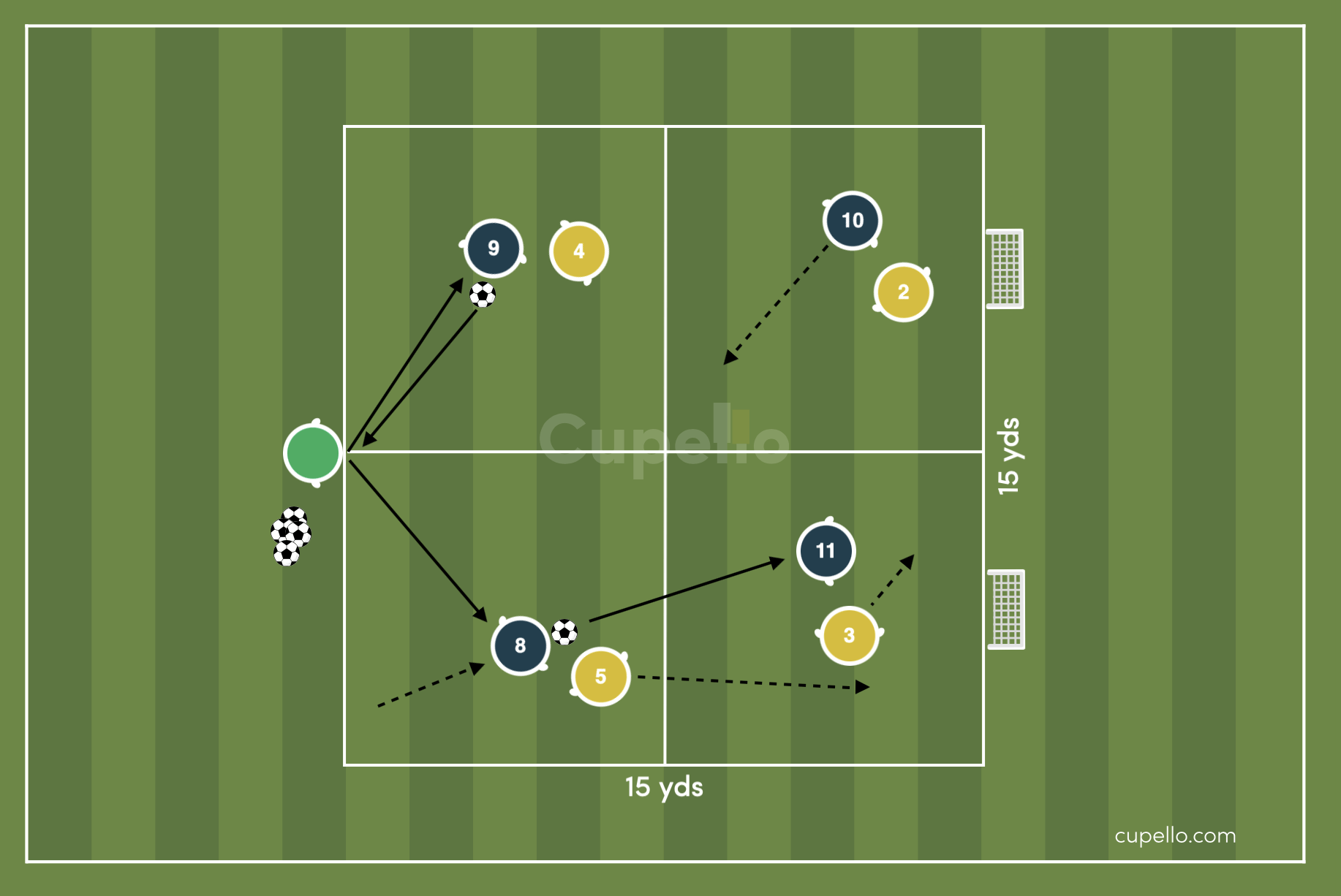
When teams are defend an attack players must support the play and work out the positions they need to be in to defend the goal – who goes to press, who covers, where should players recover to.
3. Defend the Penalty Box
Tight areas of the pitch like the penalty area need practice so your team knows what to do in this key area. Successful teams can always set up to block shots or dribbling opponents
4. Defensive Pressing Cues
How should individuals work when they are defending attacks in the final third? Use this drill to coach the different ways players must react to protect the goal.
5. Shield and Protect
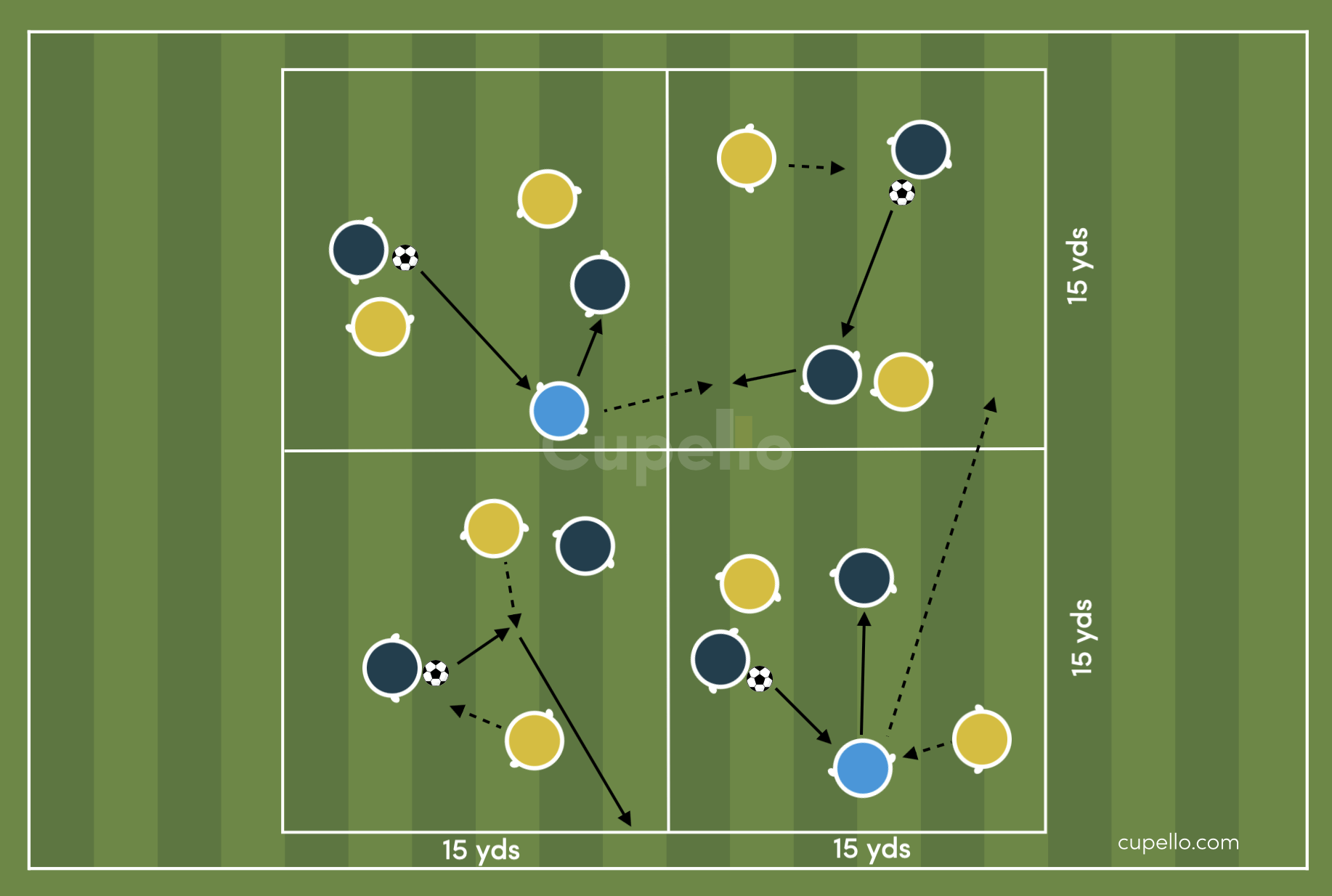
Different overloads need different types of defending to win the ball when the opposition have it. Pressure from pressing makes this a great drill to get defenders to read the movement of the players and allows them to win the ball with blocks and interceptions.
6. 2v2 Battles
One presses and one provides cover in this 2v2 game, essential coaching points for young and old when they are 2v2 in match play.
7. Recover in Defence
Players need to know what to do when they lose the ball and face a counter attack. If they know where and when to recover they are more likely to do it quickly and cut out goals.
8. Create a Robust Back Three
Your central defensive partnerships are key to keeping clean sheets during the season. If you organise you back three and get them used to covering for each other they will form a solid partnership that will be strong throughout the season
9. Delay and Play
Delaying your opponents is key to recovery and getting players behind the ball. It is also vital to hold up attacks so that your opponents get frustrated and lose the ball by making mistakes.
10. Defending Compact
Teams need to recognise when to press and when to move to keep balance when they are out of possession. They can then force their opponents into making mistakes and giving the ball away


Improve Your GameJust 1.99 p/m
Exclusive drills and sessions, get involved today!
- 100’s of Drills
- Coach to Camera Videos
- Sessions from Pro’s
- Industry Leading Advice
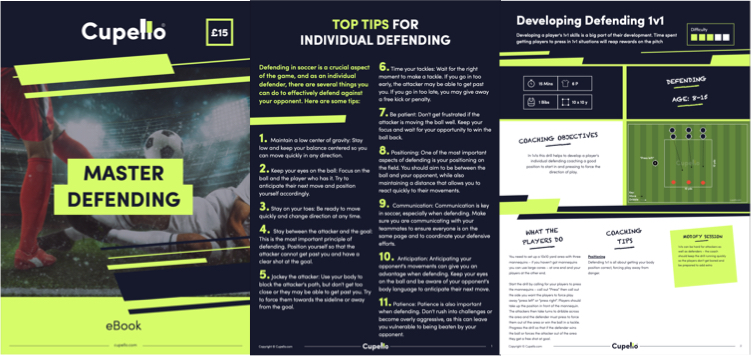
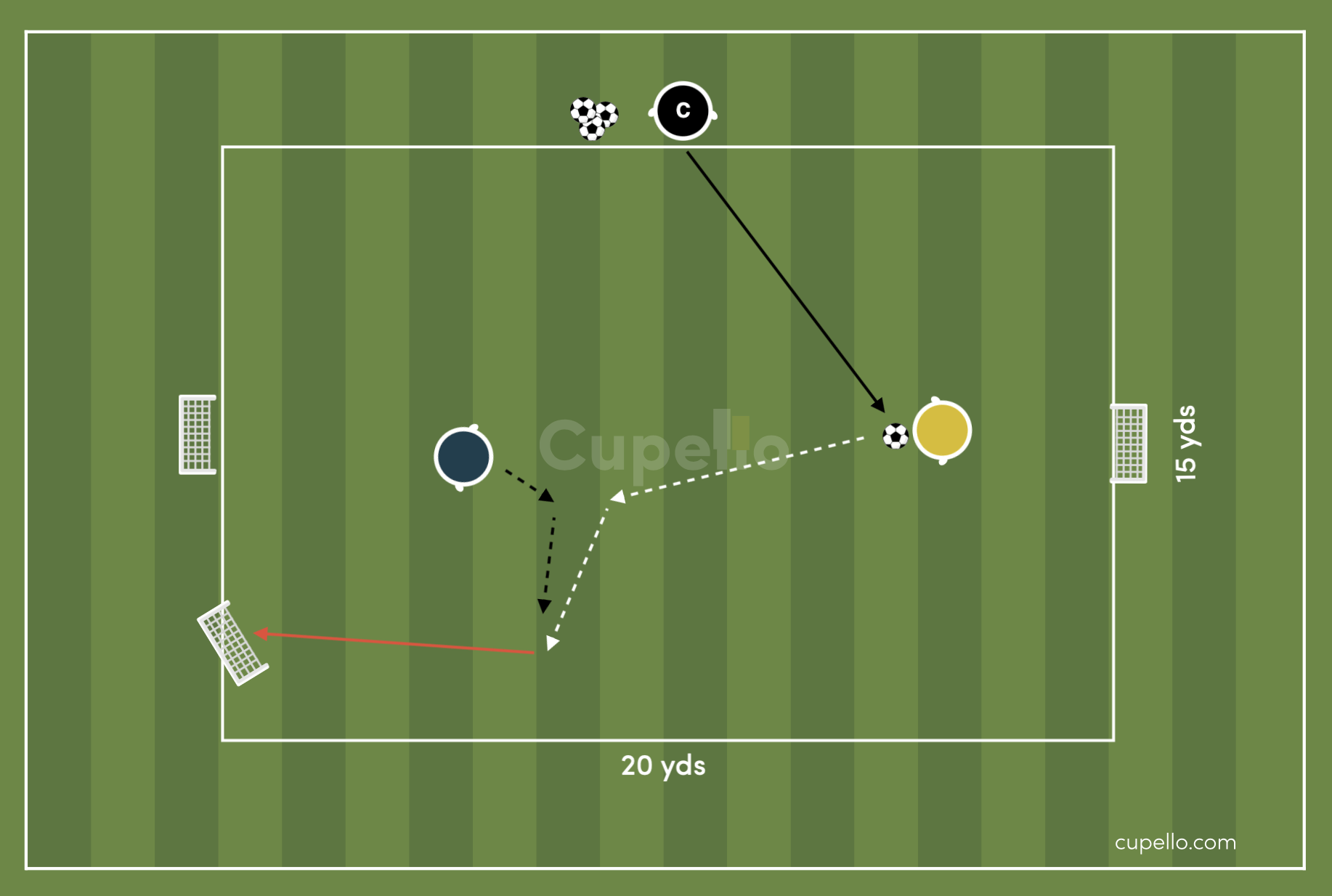
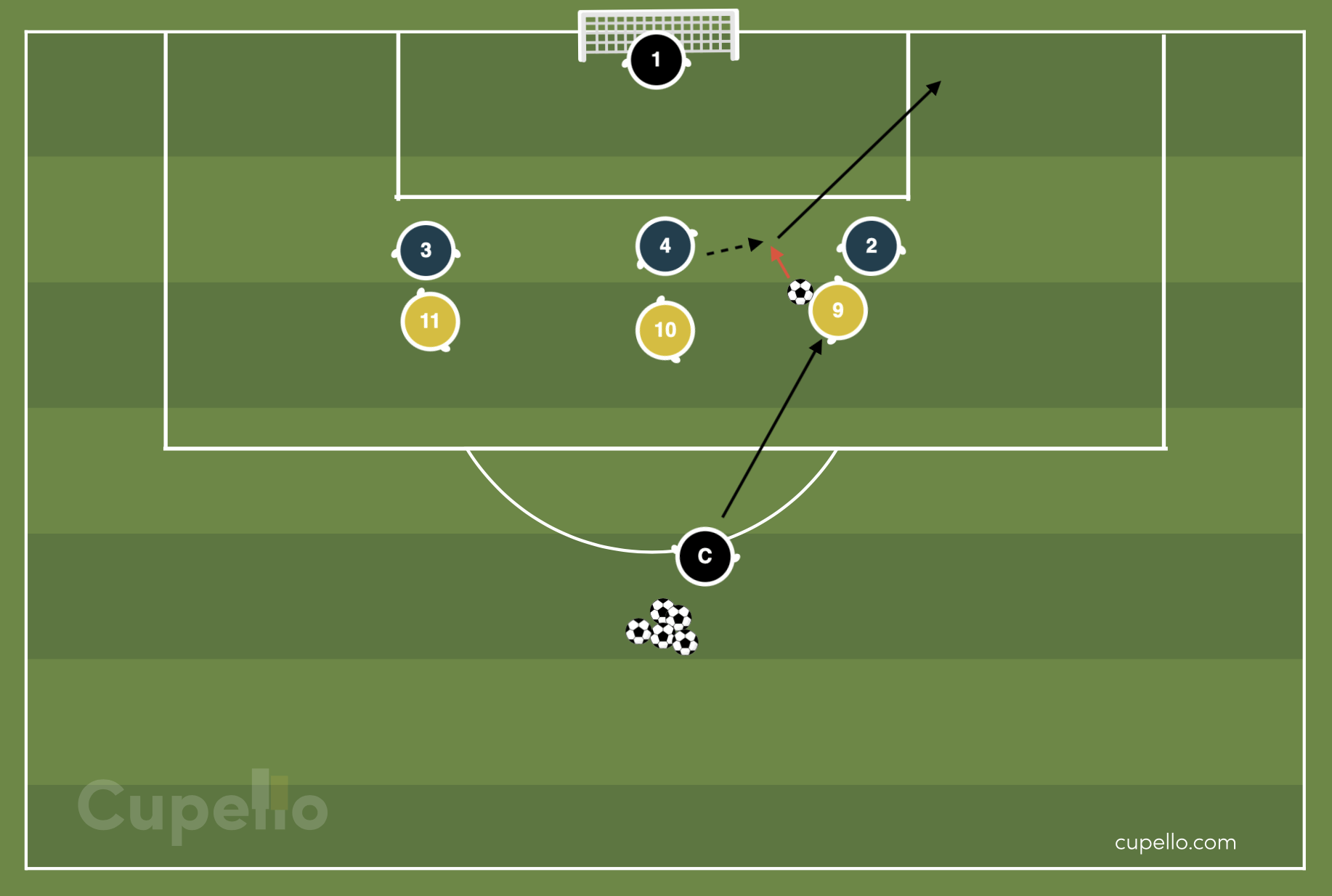
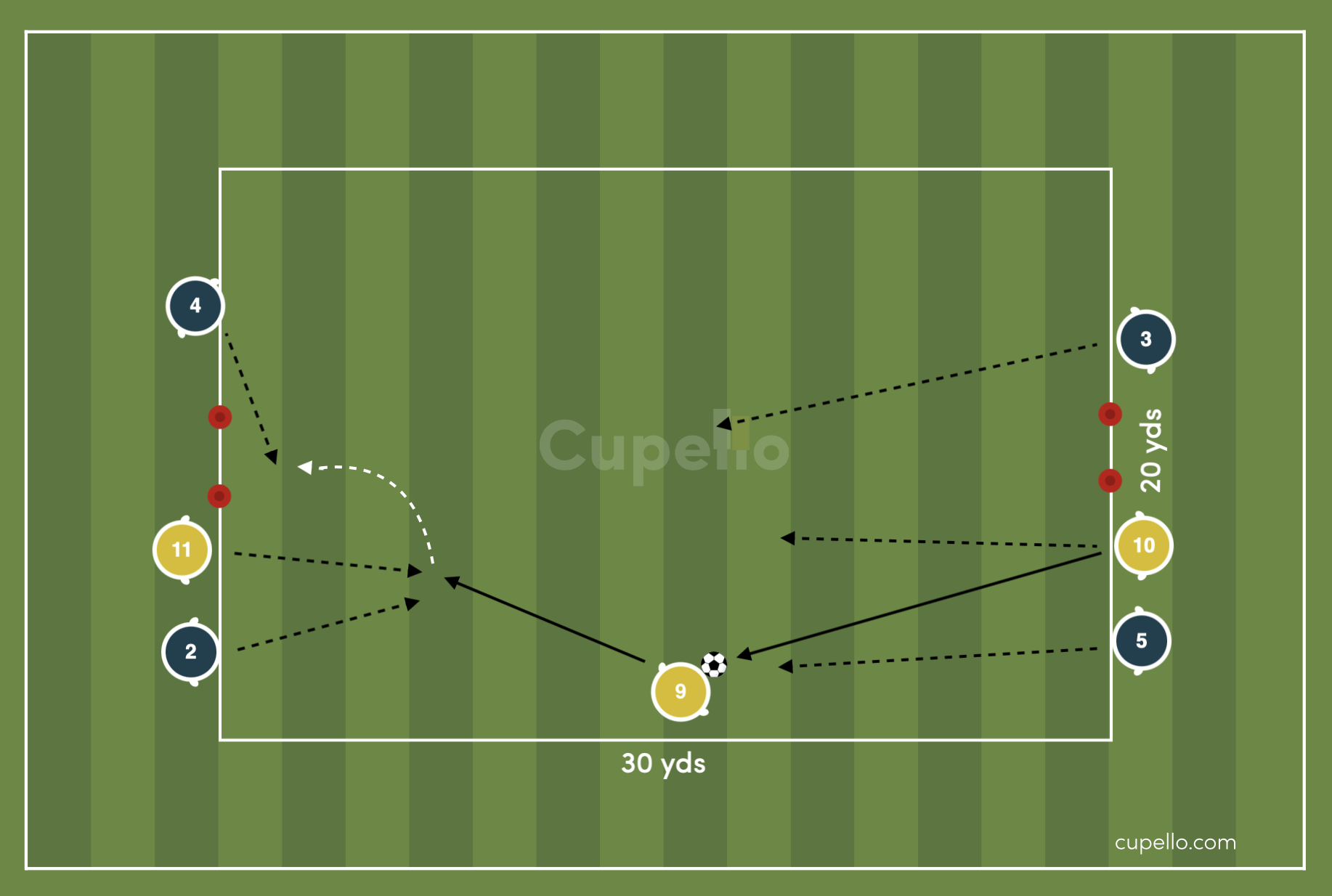
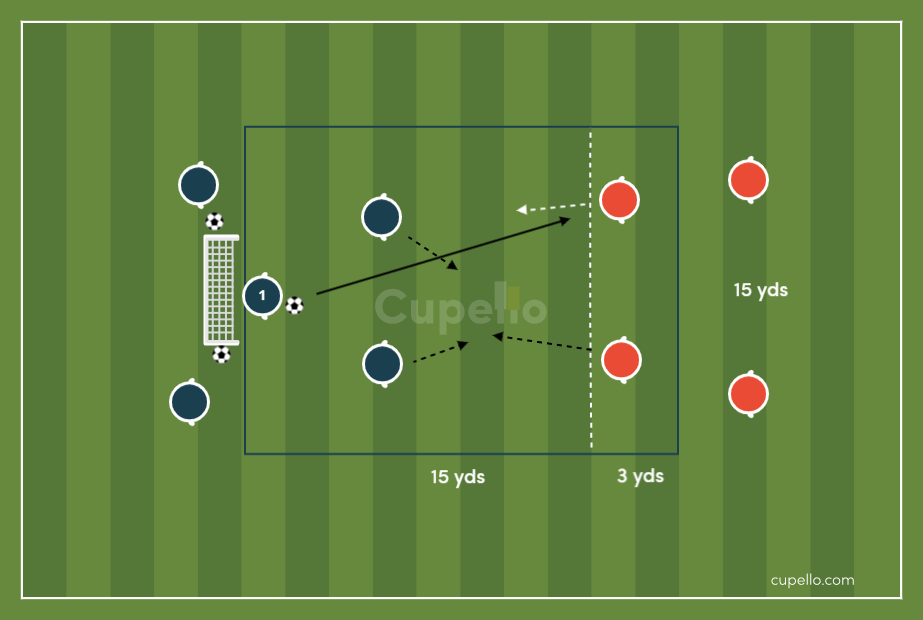
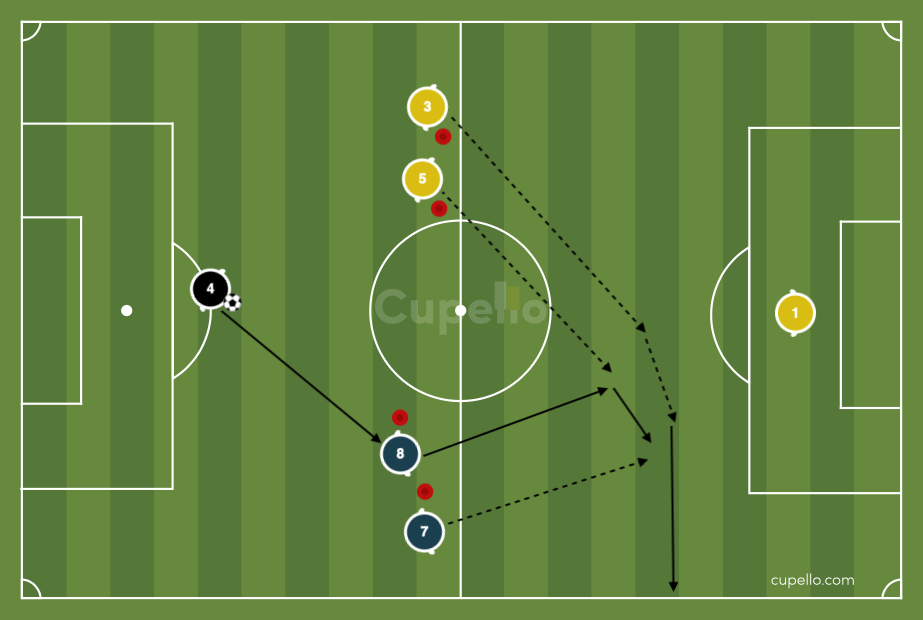
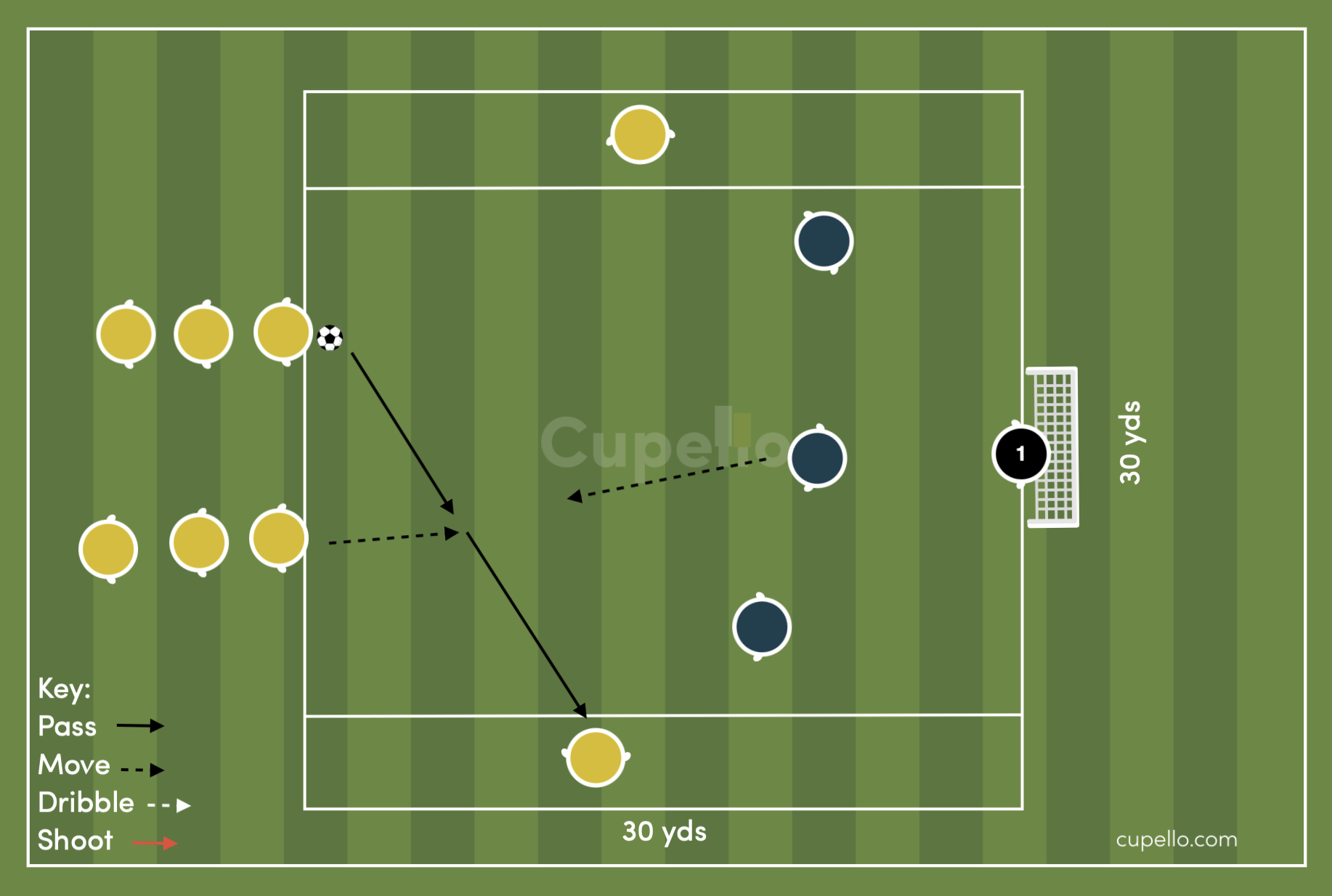
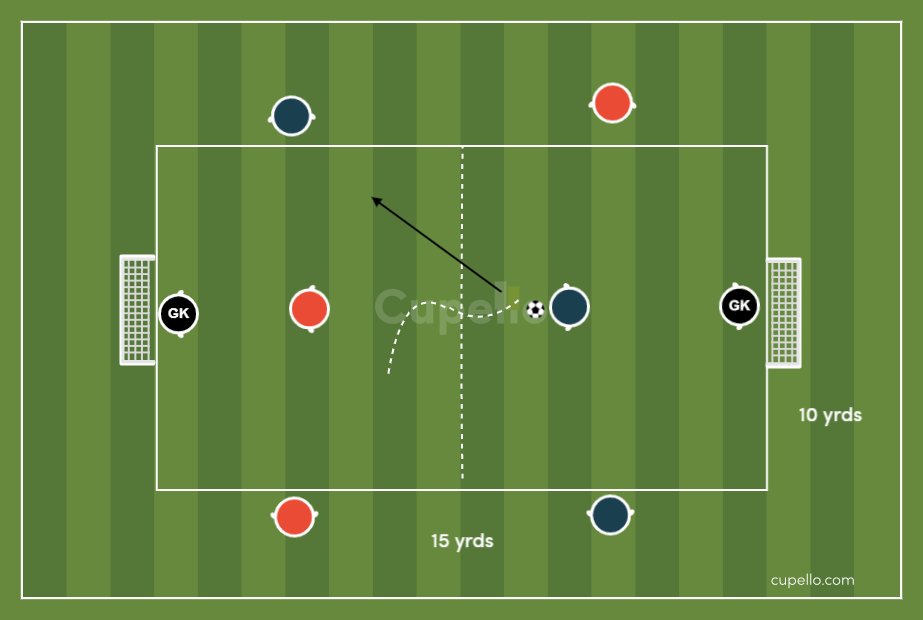
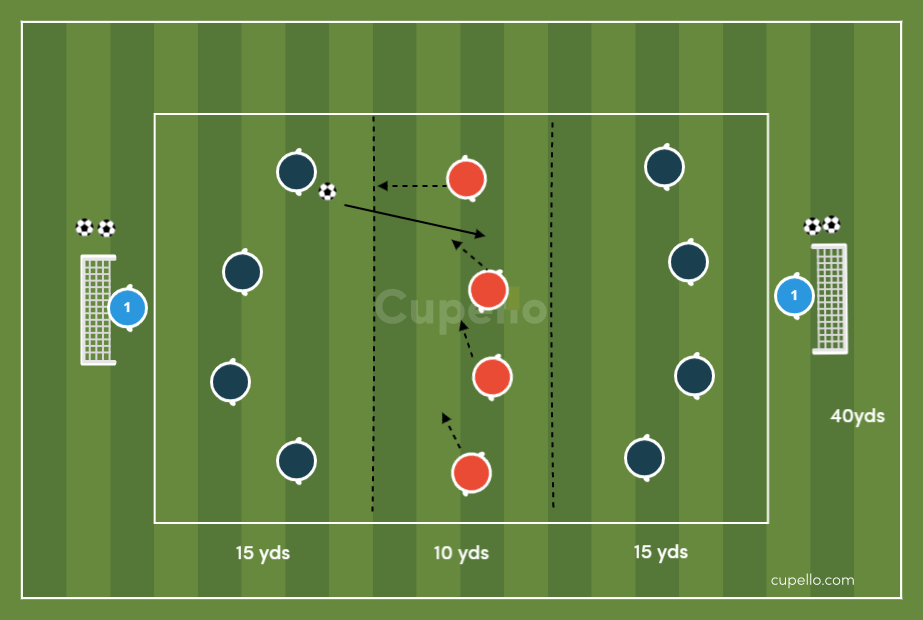

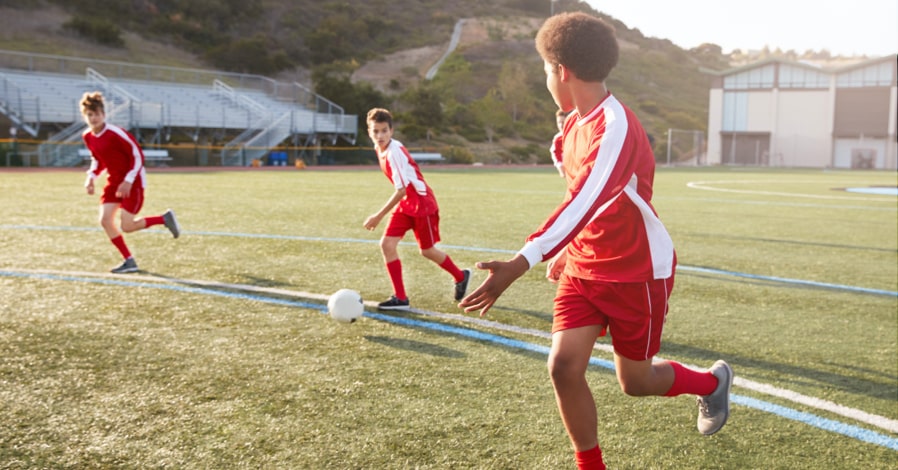
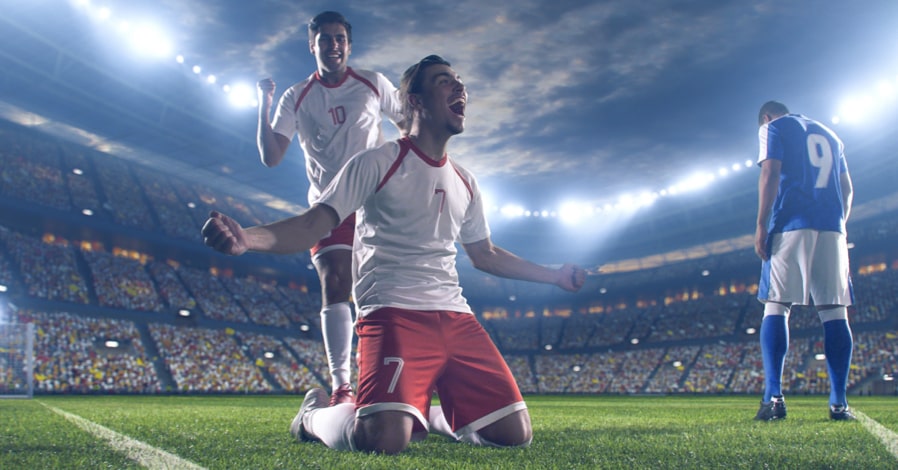
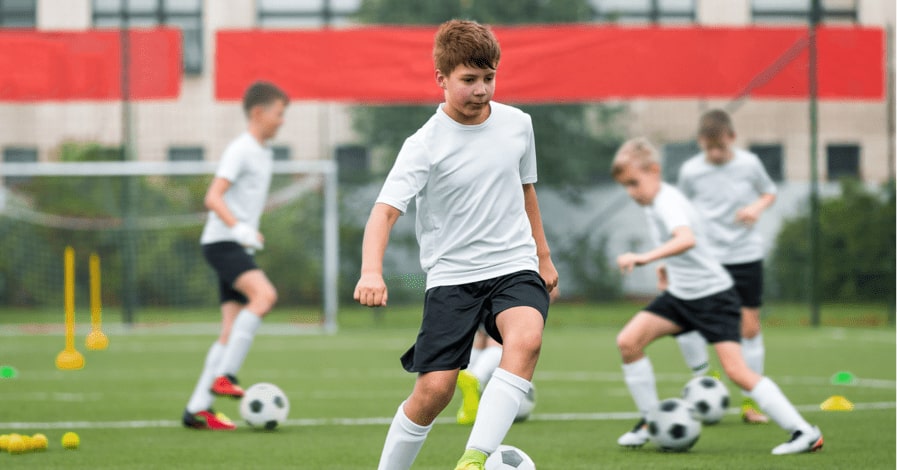

Cupello
Rethinking soccer coaching via our industry leading tools. Built to offer effective coaching development solutions for players and coaches of all levels.